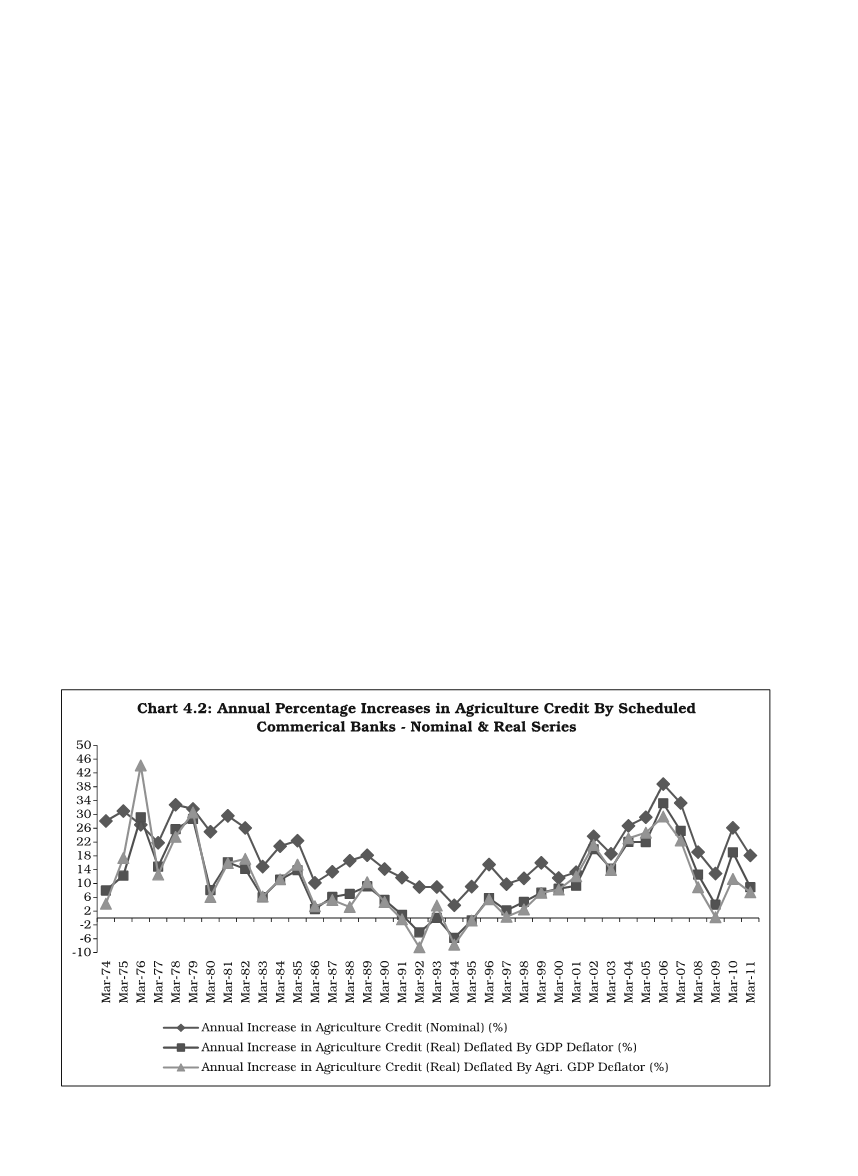
54
A Caricature Description of the Underlying Causes for the Fluctuating
Trends
Though varied supply- and demand- side factors are found in the
fluctuating behaviour of farm credit, dominant role obviously seems to
have been played by public-policy induced supply-side factors. First, the
introduction of social control over commercial banks and bank nationalisation
in July 1967 were prompted by the earlier neglect of agriculture and other
informal sectors by the banking industry. Priority sector targets and targets for
rural banking were set which brought about sharp annual increases in bank
credit for agriculture, generally at an annual rate of 18% to 30% in nominal
terms, or 6% to 28% in
real
terms during the 1970s and 1980s (Table 4.1 and
Chart 4.2).
Secondly, thevastquantitativeprogressof commercial bankingassociated
with social control and bank nationalisation was indeed unprecedented, but the
banking system failed to imbibe the broader socio-economic distributive values
and objectives in an enduring manner. Hence, the expansion brought about with
a directed and forced pace resulted in growing problems of deterioration in the
quality of loan portfolios, erosions in productivity, efficiency and profitability,
serious management weaknesses and trade union pressures leading to over-
manning in some areas and under-staffing in others, deterioration in ‘house-
keeping’ and neglect of customer service. These institutional and organisational
disabilities gave rise to “stop and go” approaches to reaching the neglected


